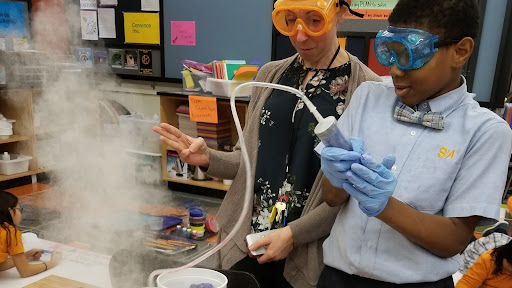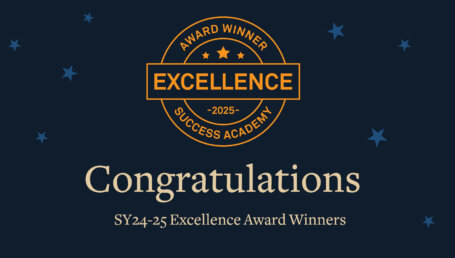
It’s no secret that Success Academy scholars have the chance to fall in love with science from an early age — they enjoy dedicated science classes five days a week, starting in kindergarten. We like to shout this fact from the rooftops, partly because we know how much our scholars love experiments and exploration — they conduct over 100 by the time they reach first grade! — but also because access to excellent science education in elementary, middle, and high school is so crucial for developing the next generation of leaders in science.
This year, we’re proud to introduce a brand-new middle school science curriculum across all 15 SA middle schools. Our teachers have already hit the ground running, trained in the new material and approach, and we can’t wait to see what scholars think. Here, SA’s leader of MS and HS science content design, Joey Powell, shared a few insights with us about the changes to the curriculum and why they matter.
What was the driving force behind this curriculum redesign?
SA has always prioritized science, and over the past 15 years, as we expanded through high school, we naturally had to plan the program from the bottom up rather than backward from college STEM preparedness. Now, with several graduating classes, we have a much clearer vision of the level and depth of scientific thinking and understanding we want our scholars to achieve by the time they graduate. Based on this understanding, our team spent the last 18 months comprehensively reimagining our middle school science content, fully re-writing all courses, units, lessons, assignments, and assessments.
The redesign was driven by a desire to teach physics, biology, earth and space, and chemistry throughout all four years of middle school — a major departure from standard American public science education, which tends to focus only on one discipline per year in these grades. Previously, SA middle school scholars studied earth science in fifth, biology in sixth, chemistry in seventh, and biology again in eighth. While they had wonderful science experiences, the siloed approach meant scholars didn’t have sufficient opportunities to make connections across disciplines and encounter concepts again before high school, and they were not introduced to physics.
What stands out about the new curriculum?
The new middle school curriculum provides a foundation for a holistic grades 5-12 science experience that integrates earth and space science, chemistry, physics, and biology in all four years and sequentially builds knowledge and skills for college preparedness. Integrating the disciplines allows scholars to approach scientific concepts through an interdisciplinary lens (for example, how do molecular and subatomic interactions help animals survive in the wild?), and to revisit concepts at a progressively more sophisticated level. It brings physics back into middle school — so critical for scholar success in high school — and moves some of the earth science concepts down into fourth grade to increase the rigor of that curriculum.
The new courses also build off our commitment to inquiry-based science by introducing a range of exceptionally high-quality and rigorous science labs and projects that are usually not seen in public education until late high school, if at all, and will prepare SA scholars for the expectations and realities of college STEM. To cite just one example, our eighth graders have a unit dedicated to genetics that features a lab where they expose wheat to UV radiation to understand the effects sunlight can have on DNA.
Are there any other exciting changes to the curriculum for us to know about?
The middle school science redesign (read more about it here) is one piece of a holistic reimagination of our K-12 academic program that the Ed Institute is engaged in, informed by what we are learning as our scholars matriculate through twelfth grade. It follows the launch last year of a newly designed 5-12 global history program which you can read about on our blog.











